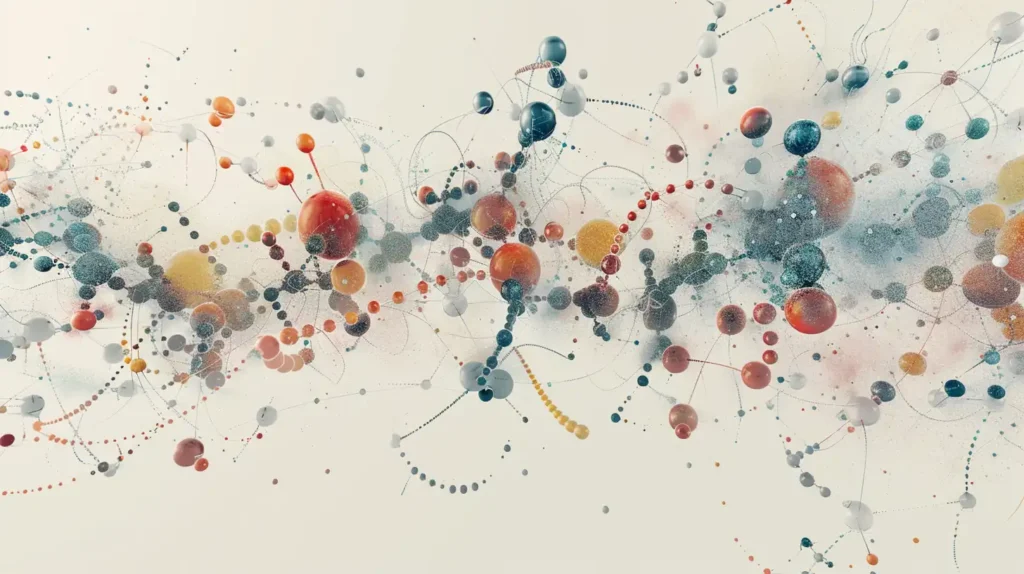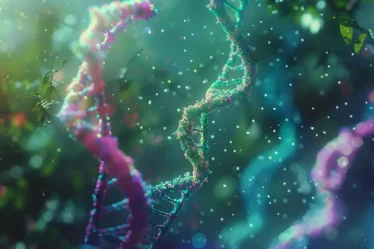
Every second, cells build thousands of proteins that shape your body—forming muscles, transporting oxygen, and controlling chemical reactions. This nonstop production depends on a process called translation in biology, where a ribosome reads mRNA and links amino acids in the correct sequence.
In this guide, you’ll follow how cells decode genetic information using mRNA, tRNA, and ribosomes. We’ll break down each step of translation in biology, from initiation to termination. You’ll also see how the genetic code, charged tRNAs, and ribosomal sites work together to build a protein.
Translation: Quick Summary
Do you just need the basics? Here’s a simple explanation of what translation in biology means:
🟠 Translation is the process where ribosomes read mRNA and build a polypeptide by linking amino acids in a specific order.
🟠 Each codon on the mRNA matches with a tRNA carrying the correct amino acid based on the genetic code.
🟠 In prokaryotes, translation can begin during transcription, while in eukaryotes, it starts after mRNA processing and export to the cytoplasm.
🟠 Energy from GTP moves the ribosome along the mRNA and powers each step of the elongation cycle.
🟠 After translation, proteins fold and may undergo chemical modifications or be directed to specific parts of the cell by signal peptides.
How Cells Translate mRNA into Proteins
Translation Decodes mRNA into Protein Chains
Translation is the process where ribosomes read the sequence of an mRNA and build a chain of amino acids based on the genetic code. This step happens in the cytoplasm, after transcription has produced a mature mRNA. Each three-nucleotide codon in the mRNA matches a specific amino acid, which is added to the growing chain in the correct order.
The process begins when a ribosome binds to the mRNA and starts reading from the start codon (usually AUG). With each step, a matching tRNA brings the correct amino acid, and the ribosome links it to the previous one with a peptide bond. Translation continues codon by codon until a stop codon signals the end of the sequence.
Components That Drive Translation
Messenger RNA (mRNA)
mRNA carries the sequence of codons copied from a gene. It acts as the template that determines the amino acid order.
Ribosomes
Ribosomes are made of rRNA and proteins. They read codons, hold the tRNAs in place, and catalyze peptide bond formation.
tRNA and Amino Acids
tRNAs bring amino acids to the ribosome. Each tRNA has an anticodon that pairs with a codon and carries its specific amino acid.
Enzymes and GTP
Aminoacyl-tRNA synthetases attach the correct amino acid to each tRNA. GTP provides energy for key steps like tRNA loading and ribosome movement.
Translation Process Step-by-Step
Initiation Begins at the Start Codon
Translation begins when the small ribosomal subunit attaches to the mRNA. In bacteria, the ribosome finds the Shine-Dalgarno sequence just before the start codon. In eukaryotes, it binds to the 5′ cap and moves along the mRNA to locate the start codon, AUG. This codon sets the reading frame, which determines how the mRNA will be read in triplets.
A special initiator tRNA carrying methionine binds to AUG by matching its anticodon to the mRNA codon. Once the tRNA is in place, the large ribosomal subunit joins the complex. This creates a complete ribosome with three sites: the A site, the P site, and the E site. The initiator tRNA starts in the P site.
Elongation Builds the Polypeptide Chain
During elongation, the ribosome moves along the mRNA three bases at a time. Each codon is matched with a charged tRNA that enters the A site. The ribosome checks for the correct codon–anticodon pairing. If it matches, the ribosome links the amino acid from the A site to the chain growing in the P site. This bond is a peptide bond formed by the catalytic RNA in the large subunit.
After the bond forms, the ribosome shifts forward. The tRNA in the P site moves to the E site and exits. The tRNA from the A site, now carrying the peptide chain, moves into the P site. A new tRNA enters the A site, and the cycle repeats. GTP provides the energy for each movement and ensures accuracy.
Termination Releases the Polypeptide
When the ribosome reaches a stop codon (UAA, UAG, or UGA), no tRNA matches it. Instead, a release factor enters the A site. This protein causes the ribosome to add a water molecule to the chain instead of another amino acid. The chain is released, and the ribosome breaks apart. The mRNA and ribosomal subunits are then recycled.
Match tRNA and Codons Using the Genetic Code
The genetic code connects nucleotide sequences in mRNA to amino acids in proteins. During translation, tRNA molecules read codons one by one and bring in the correct amino acids. This matching system is precise, consistent, and used by nearly all organisms.
Charged tRNA carries one specific amino acid
Each tRNA molecule has two important parts: an anticodon and an amino acid attachment site. The anticodon contains three RNA bases that pair with a codon on the mRNA. The opposite end carries the matching amino acid. Before translation, this amino acid must be attached to the tRNA. The reaction is catalyzed by enzymes called aminoacyl-tRNA synthetases. Each enzyme is highly specific, recognizing both the tRNA structure and the correct amino acid.
Once a tRNA is linked to its amino acid, it is called charged. These charged tRNAs enter the ribosome during elongation, where their anticodons base-pair with codons. If the match is correct, the ribosome adds the amino acid to the growing polypeptide chain.
Codons determine the amino acid sequence
The mRNA is read three nucleotides at a time. These triplets are called codons. Each codon codes for one amino acid, or a stop signal. For example, UUU codes for phenylalanine, while UGA signals the end of translation. AUG always codes for methionine and also marks the starting point of translation.
| Codon | Amino Acid |
| AUG | Methionine (Start) |
| UUU | Phenylalanine |
| UUA | Leucine |
| GGC | Glycine |
| UGA | Stop |
The genetic code is redundant. More than one codon can specify the same amino acid. For instance, leucine is coded by six different codons. However, the code is not ambiguous—each codon always corresponds to the same amino acid. This reliability ensures that ribosomes produce the same protein from the same mRNA every time.
Compare Prokaryotic and Eukaryotic Translation Mechanisms
Prokaryotic and eukaryotic translation follow the same basic steps, but the details differ. These differences reflect how cells are organized and how their machinery works.
Ribosomes use different signals to locate the start codon
In prokaryotes, the ribosome binds directly to a Shine-Dalgarno sequence on the mRNA. This purine-rich sequence sits just before the AUG start codon. It pairs with a region on the 16S rRNA of the small ribosomal subunit. This match ensures the ribosome starts translation in the right place.
Eukaryotic ribosomes use a scanning method. They first attach to the 5′ cap of the mRNA. Then they move along the mRNA until they find an AUG codon in a suitable sequence context. That codon becomes the starting point for protein synthesis.
mRNA structure affects how many proteins it can produce
Prokaryotic mRNAs are often polycistronic. That means a single mRNA can carry instructions for several proteins. Each coding region has its own Shine-Dalgarno sequence and start codon.
Eukaryotic mRNAs are usually monocistronic. They carry instructions for one protein only. The ribosome starts at the first AUG and reads one open reading frame.
Prokaryotes can begin translation during transcription
In bacteria and archaea, ribosomes attach to mRNA while RNA polymerase is still making it. Transcription and translation happen in the same space. This coupling speeds up protein production.
Eukaryotic cells separate the two processes. Transcription happens in the nucleus. Translation starts only after the mRNA reaches the cytoplasm.
Translation Speed, Energy Use, and Accuracy
Translation moves quickly but costs a lot of energy. Each amino acid added requires two GTP molecules—one for moving the ribosome forward and one for placing the tRNA in the correct site. This energy ensures proper timing and prevents errors.
Prokaryotic ribosomes are faster than eukaryotic ones. Bacterial ribosomes can add up to 20 amino acids per second. In eukaryotes, the speed drops to about 5–9 per second. Still, both systems match the pace of their own transcription machinery.
Translation isn’t perfect. Aminoacyl-tRNA synthetases help reduce errors by attaching the correct amino acid to each tRNA. During elongation, tRNAs with mismatched anticodons usually get rejected before peptide bond formation. Even so, some errors happen. The typical error rate is around 1 in 1,000 to 1 in 10,000 amino acids. These mistakes are rare but can affect how proteins fold and function if they build up.
Track What Happens After Translation Ends
When translation ends, the new polypeptide doesn’t just float around. It folds into a specific shape, sometimes while still attached to the ribosome. Some chains are modified—enzymes may cut them, or add groups like sugars (glycosylation) or phosphates (phosphorylation). These changes help the protein function properly.
In many cases, a short sequence called a signal peptide appears at the beginning of the chain. This tag guides the ribosome to the endoplasmic reticulum (ER), where translation continues and the protein enters the ER. Once inside, the protein may be sent to different parts of the cell or packed for secretion.
Every step after translation—from folding to modification and sorting—follows specific rules. If anything goes wrong, the protein may be degraded. Cells reuse the amino acids or try again, maintaining quality without wasting resources.
Get Help from a Biology Tutor to Master Translation
If you’re stuck on translation and can’t tell a codon from a stop signal, one-on-one tutoring can really help. A private biology tutor will sit down with you and go through mRNA decoding, ribosome steps, and what each tRNA actually does—without skipping the parts that textbooks rush through.
A “biology tutor London” can help you learn how to read a codon table with confidence. If you’re in the Midlands, try “tutoring molecular biology Birmingham” to focus on comparing translation in prokaryotes and eukaryotes. A “cell biology private teacher Sheffield” might explain why GTP is needed or how the ribosome shifts during elongation. You can also find “online biology tutor Manchester” options if you’re more into flexible, from-home lessons.
Sometimes the pace in school is just too fast. These lessons let you slow down and actually figure it out. Book a session on meet’n’learn and get help with what’s confusing you—not just what’s on the test.
Looking for more resources? Check out our Biology blogs for additional learning material. If you’re ready for extra help, a tutor can guide you through the most challenging topics with clarity and patience.
Translation: Frequently Asked Questions
1. What is translation in biology?
Translation in biology is the process where ribosomes read mRNA and assemble amino acids into a protein.
2. Where does translation happen in a cell?
Translation happens in the cytoplasm, either free or on the rough endoplasmic reticulum.
3. What is the function of tRNA during translation?
tRNA carries specific amino acids to the ribosome and matches them to codons on the mRNA.
4. Which codon starts translation in biology?
The start codon is usually AUG, which codes for methionine.
5. What stops translation in biology?
A stop codon (UAA, UAG, or UGA) signals the end of the protein chain.
6. How does a ribosome know where to start translation?
In prokaryotes, the Shine-Dalgarno sequence positions the ribosome; in eukaryotes, the 5′ cap guides it to the first AUG.
7. What does the genetic code do during translation?
The genetic code matches each mRNA codon to a specific amino acid.
8. Why do different organisms have similar translation machinery?
Most organisms share the same genetic code and core translation components due to common evolutionary origin.
Sources:
1. NCBI
2. BioLibreText
3. Wikipedia



